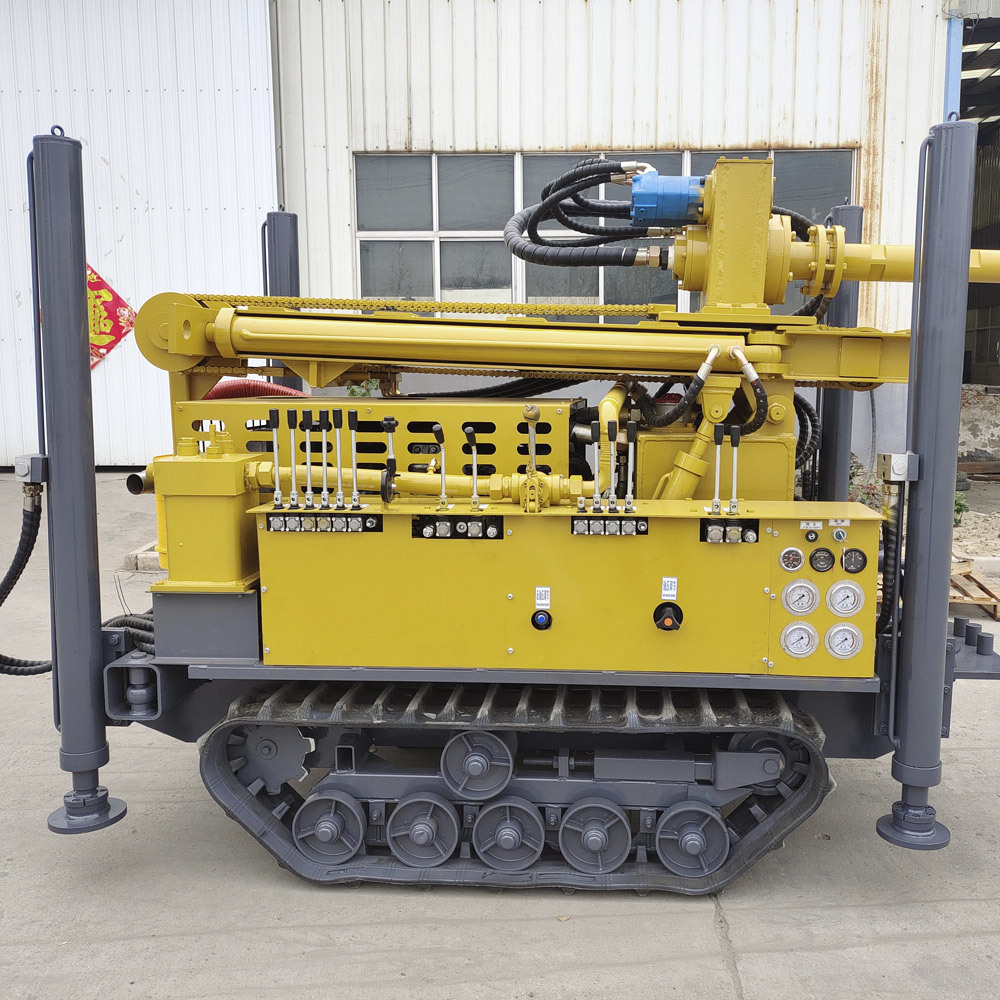Mini Water Borehole Rigs: What to Expect in Terms of Output
Oct 13,2025

Mini Water Borehole Rigs: What to Expect in Terms of Output
Introduction to Mini Water Borehole Rigs
Mini water borehole rigs have emerged as indispensable tools in various industries, particularly in agriculture, construction, and environmental projects. These compact drilling machines are designed to produce boreholes for water extraction, geothermal energy, and other applications. Understanding their operational output is vital for anyone considering their use in projects requiring groundwater access.
Understanding Borehole Rig Output
When we talk about the output of mini water borehole rigs, it's essential to consider multiple factors that determine their performance. Key aspects include depth capacity, drilling speed, and water yield. Additionally, the type of soil and rock formations can significantly influence these parameters.
Depth Capacity and Its Implications
The depth capacity of mini borehole rigs typically ranges from 50 to 300 meters, depending on the rig's specifications and the geology of the area. This range influences the usability of the rig for different projects. For instance, agricultural projects may require shallower boreholes, while industrial applications might demand deeper capacities.
Drilling Speed: Efficiency in Action
Drilling speed is another crucial aspect of output. Mini borehole rigs generally operate at a rate of 0.5 to 3 meters per hour. Factors such as the rig's power, drill bit type, and soil conditions can affect drilling speed. Higher speeds are often desirable, but they should not compromise the quality of the borehole.
Understanding Different Drill Bits
The choice of drill bit plays a significant role in the efficiency and effectiveness of borehole rigs. Various types of bits, including rotary, percussion, and hollow stem augers, cater to different soil types and project requirements. Selecting the right drill bit can enhance drilling speed and accuracy, ultimately affecting the yield of water.
Water Yield: Measuring Success
Water yield refers to the volume of water produced from a borehole over a specific time. This measurement is crucial for understanding the effectiveness of a borehole rig. Typical water yields from mini rigs can range from a few liters per minute to several hundred liters, depending on geological conditions.
Factors Influencing Water Yield
Several factors can affect water yield, including:
- **Geological Conditions**: The type of rock and soil can significantly impact water flow rates.
- **Borehole Diameter**: Larger boreholes can typically yield more water.
- **Well Design**: Properly designed boreholes ensure optimal water retrieval without collapsing.
Conducting a Yield Test
To measure water yield accurately, it's advisable to conduct a pump test. This involves pumping water from the borehole at a controlled rate and measuring the drawdown over time. This test helps in understanding the sustainable yield and can guide future water management strategies.
Applications of Mini Water Borehole Rigs
Mini water borehole rigs are versatile tools used across various sectors. Their compact size allows for easy transport and operation in remote areas, making them suitable for multiple applications.
Agricultural Uses
Farmers frequently utilize mini borehole rigs to access groundwater for irrigation. Reliable water sources can significantly enhance crop yields and ensure sustainable farming practices. The ability to drill boreholes at relatively low costs makes them an attractive option for smallholder and large-scale farmers alike.
Construction and Site Development
In construction, mini water borehole rigs are used for site investigations and to establish water sources for various projects. Access to clean water is critical for concrete mixing, soil compaction, and other processes. Additionally, understanding groundwater levels can help prevent construction-related flooding.
Environmental Applications
Mini borehole rigs play a vital role in environmental assessments and monitoring. They are often employed to measure groundwater quality, assess contamination levels, and support ecological studies. Their portability allows for efficient data collection in various environments.
Choosing the Right Mini Water Borehole Rig
Selecting the appropriate mini borehole rig for your needs involves evaluating several key factors, including project size, soil conditions, and budget.
Key Considerations
1. **Project Requirements**: Assess the depth and water yield needed for your specific project.
2. **Soil Conditions**: Conduct preliminary studies to understand the type of soil you will be drilling into.
3. **Budget Constraints**: Determine your budget for renting or purchasing a rig, including maintenance costs.
Popular Brands and Models
The market offers many brands and models of mini water borehole rigs, each with unique features. Some well-regarded options include:
- **Dando Drilling International**: Known for their robust designs and efficient drilling capabilities.
- **Sonic Drill Corporation**: Offers advanced sonic drilling technologies for challenging geological conditions.
- **Hanjin**: Provides a variety of models suitable for different applications and budget levels.
Renting vs. Buying a Mini Rig
Deciding whether to rent or purchase a mini water borehole rig depends on your project's duration and frequency of use. For one-time projects, renting may be more cost-effective. However, frequent use might justify the expense of purchasing outright.
Maintenance Tips for Mini Water Borehole Rigs
Proper maintenance is essential for ensuring the longevity and efficiency of mini borehole rigs. Regular checks can prevent costly breakdowns and improve overall performance.
Routine Maintenance Steps
1. **Inspect Drill Bits**: Regularly check for wear and replace as needed.
2. **Lubricate Moving Parts**: Keep all moving parts well-lubricated to ensure smooth operations.
3. **Clean the Rig After Use**: Clean the rig thoroughly to prevent dirt buildup and corrosion.
Common Issues and Troubleshooting
Operators should familiarize themselves with common issues, such as reduced drilling speed or equipment overheating. Being proactive about troubleshooting can save time and resources during operations.
Safety Considerations When Using Mini Water Borehole Rigs
Safety must always be a priority when operating mini borehole rigs. Adhering to safety guidelines can prevent accidents and ensure a secure working environment.
Personal Protective Equipment (PPE)
Operators should wear appropriate PPE, including helmets, gloves, goggles, and ear protection. This gear is essential for shielding against potential hazards associated with drilling activities.
Site Safety Protocols
Establishing clear safety protocols for the drilling site is vital. These may include:
- **Marking Hazardous Areas**: Clearly outline zones where the risk of falling debris or equipment operation exists.
- **Training Personnel**: Ensure all personnel are properly trained in equipment operation and emergency procedures.
FAQ Section
1. What is the typical cost of mini water borehole rigs?
The cost can vary widely depending on the model and features, ranging from $5,000 to $25,000 for purchase, while rental rates may start at $200 per day.
2. How deep can mini water borehole rigs drill?
Most mini rigs can drill between 50 to 300 meters deep, depending on the model and terrain.
3. Can mini water borehole rigs operate in rocky conditions?
Yes, but selecting a suitable drill bit and configuring the rig for tougher terrain is essential for optimal performance.
4. How do I know if a borehole is successful?
A successful borehole typically offers adequate water yield and remains stable without collapsing. Conducting a yield test can confirm success.
5. What maintenance is required for mini water borehole rigs?
Regular inspections, cleaning, and lubrication of moving parts are crucial for maintaining efficiency.
Conclusion
Mini water borehole rigs are powerful tools that offer numerous benefits across various applications. Their output, including depth capacity, drilling speed, and water yield, can vary based on several factors. By understanding these metrics and considering essential aspects such as soil conditions and project requirements, operators can maximize efficiency and ensure successful drilling outcomes. Whether for agricultural, construction, or environmental purposes, investing in the right mini water borehole rig can lead to sustainable water solutions and project success.
PREVIOUS:








